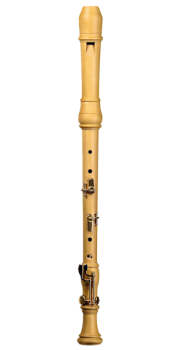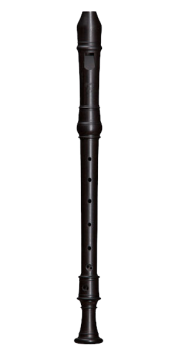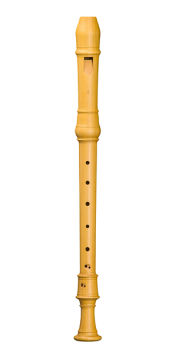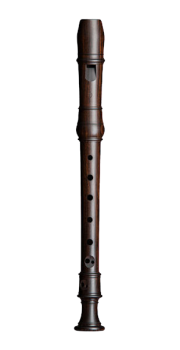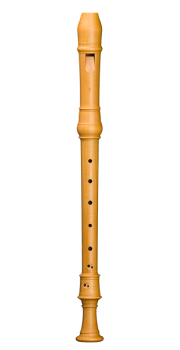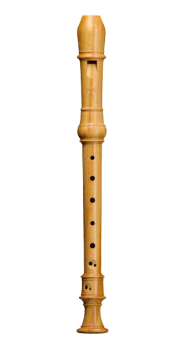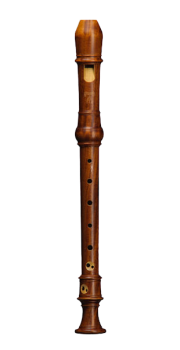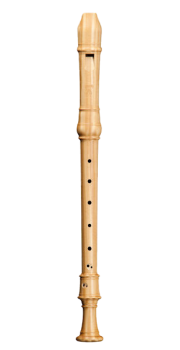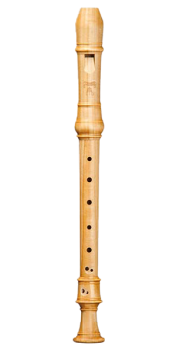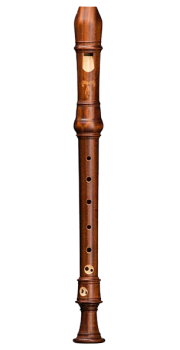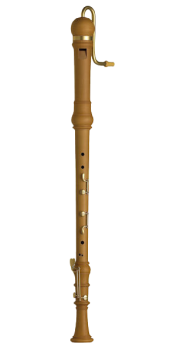No products
Prices are tax included
Filters
MOLLENHAUER DENNER: A sophisticated ensemble based on original instruments by Jacob Denner (1681–1735) in the important musical instrument collections in Nuremberg and Copenhagen.
Brilliant, expressive sound with a convincing charm.
Agile, quick response in all octaves: ideal for virtuosic music of any era.
Undercut finger holes: discov...
MOLLENHAUER DENNER: A sophisticated ensemble based on original instruments by Jacob Denner (1681–1735) in the important musical instrument collections in Nuremberg and Copenhagen.
Brilliant, expressive sound with a convincing charm.
Agile, quick response in all octaves: ideal for virtuosic music of any era.
Undercut finger holes: discover the particularly stable sounds of these instruments.
Visually impressive: finely crafted ornamental rings and a surface pleasingly finished with oil.
Several changes in the construction of recorders took place in the 17th century, resulting in the type of instrument generally referred to as Baroque recorders of which the Denner recorder is one model, as opposed to the earlier Renaissance recorders. These innovations allowed baroque recorders to possess a tone regarded as "sweeter" than that of the earlier instruments, at the expense of a reduction in volume, particularly in the lowest notes.
During the baroque period, the recorder was traditionally associated with pastoral scenes, miraculous events, funerals, marriages, and amorous scenes. Images of recorders can be found in literature and artwork associated with all of these. Purcell, J. S. Bach, Telemann, and Vivaldi used the recorder to suggest shepherds and imitate birds in their music.
Johann Christoph Denner (August 13, 1655 – April 26, 1707),[1] was a famous woodwind instrument maker of the Baroque era, to whom the invention of the clarinet is attributed.
Denner was born in Leipzig to a family of horn-tuners. With his father, Heinrich Denner, a maker of game whistles and hunting horns, he moved to Nuremberg in 1666.J. C. Denner went into business as an instrument maker in 1678 and was granted rights for the 'manufacture of French musical instruments consisting chiefly of oboes and recorders [flandadois]' in 1697. Two of his sons, Jacob and Johann David, also became instrument builders. At least sixty-eight instruments attributed to J. C. Denner have survived to the present day, although the surviving instruments with his name are believed to have come from his sons' workshops.
Reference: MOL-5432C
Brand: Mollenhauer
Denner Comfort Tenor Recorder in Castello Boxwood
- Castello boxwood tenor, baroque double holes, with four keys.
- Denner - A wealth of sound from fine woods. A sophisticated ensemble based on original instruments by Jacob Denner (1681-1735) in Nuremberg and Copenhagen.
- Our Comfort Tenor makes playing easy: two additional keys reduce the stretch of the hand.
$2,074.00In StockReference: MOL-DE-1204
Brand: Mollenhauer
Denner-Edition Treble Recorder in Grenadilla
- Grenadilla Treble.
- Alto Recorder after Jacob Denner (1681-1735). Denner-Edition 442.
- Hand-crafted baroque recorders. The top class among baroque alto recorders at modern pitch. Highest soloistic demands.
- The basis of the historical bore shape are concepts like those developed in the most important Nuremberg woodwind instrument workshop of the Denner family.
$2,558.00Out of stockReference: MOL-DE-1201
Brand: Mollenhauer
Denner-Edition Treble Recorder in Satinwood
Natural Satinwood Treble. Alto recorder after Jacob Denner (1681-1735). Denner-Edition 442. Hand-crafted baroque recorders. The top class among baroque alto recorders at modern pitch. Highest soloistic demands. The basis of the historical bore shape are concepts like those developed in the most important Nuremberg woodwind instrument workshop of the Denner family - particularly of Jacob De
$2,259.00In StockReference: MOL-DL-5222
Brand: Mollenhauer
Denner-Line Treble Recorder A-415 in Castello Boxwood
- The alto recorder that introduces the world of low baroque pitch (a 1 = 415 Hz) with high-precision series production.
- Made from Castello Boxwood
$1,192.00In StockReference: MOL-5024
Brand: Mollenhauer
Denner Sopranino Recorder in Grenadilla
- Grenadilla Sopranino. Baroque Double Holes.
- Reliable, accurate playing even in the highest register - a versatile, clear and beautiful sounding instrument.
$730.00Out of stockReference: MOL-DL-5206
Brand: Mollenhauer
Denner-Line Treble Recorder A-415 in Pearwood
- Baroque pitch (A-415)
- Denner pearwood treble at a price most serious players can afford.
- A well balanced baroque timbre of distinctive beauty and stability. It offers players new musical expressiveness with perfect intonation.
$826.00In StockReference: MOL-DE-1101
Brand: Mollenhauer
Denner-Edition Descant Recorder in Satinwood
Descant recorder after Jacob Denner (1681-1735). Denner-Edition A-442.
The top class among Hand-crafted baroque descant recorders at modern pitch. Highest soloistic demands.
$1,534.00Out of stockReference: MOL-DE-1101D
Brand: Mollenhauer
Denner-Edition Descant Recorder in Stained Satinwood
Historically Stained Satinwood Descant
Descant recorder after Jacob Denner (1681-1735). Denner-Edition 442.
The top class among Hand-crafted baroque descant recorders at modern pitch. Highest soloistic demands.
$1,541.00Out of stockReference: MOL-DE-1211
Brand: Mollenhauer
Denner-Edition Treble Recorder A-415 in Satinwood
- Natural Satinwood Treble, A' = 415Hz Alto recorder after Jacob Denner (1681-1735).
- Hand-crafted baroque recorders.
- The low pitch solo instrument in the top class of baroque alto recorders.
- Highest soloistic demands - Strong and variable in tone, flexible and focused in response,stable in perfect intonation.
$2,259.00In StockReference: MOL-DE-1111
Brand: Mollenhauer
Denner-Edition Descant Recorder A-415 in Satinwood
Hand-crafted Soprano baroque recorder, Satinwood. Pitch A-415 Hz
$1,534.00In StockReference: MOL-DE-1111D
Brand: Mollenhauer
Denner-Edition Descant Recorder A-415 in Stained Satinwood
Hand-crafted Soprano baroque recorder, Satinwood historically stained. Pitch A- 415 Hz
$1,541.00In StockReference: MOL-5506
Brand: Mollenhauer
Denner Bass Recorder in Pearwood
- Pearwood Bass Recorder, Baroque double holes with four keys.
- The lower register; Newly designed bass cap with crook, the cleverly designed wind channelling allows for the air to pass through unobstructed and produce a clear and noise-free sound in all registers.
- Adjustable sound; Different sound qualities can be achieved by a slight turning of the cap.
$3,617.00Out of stock

